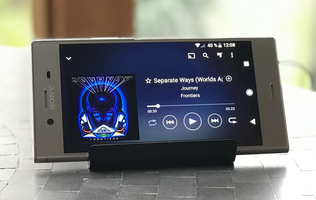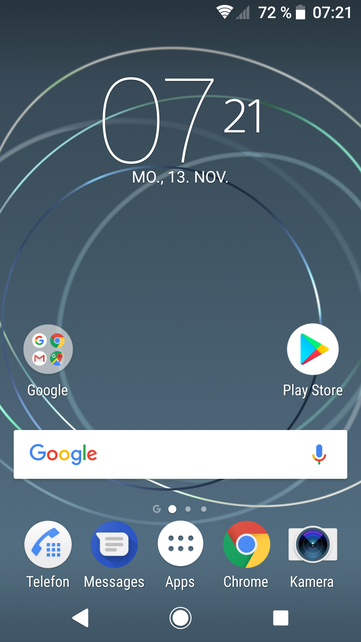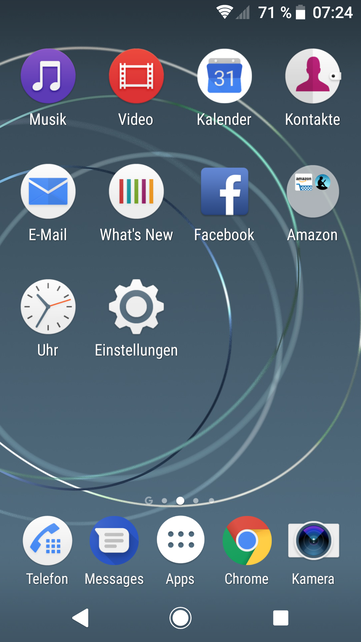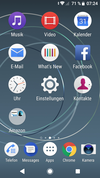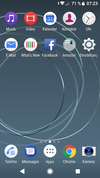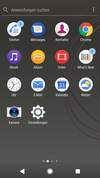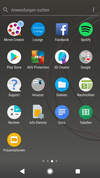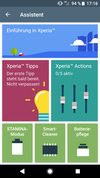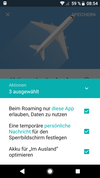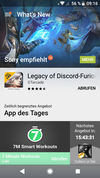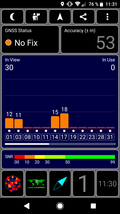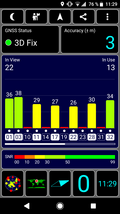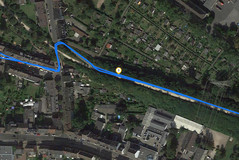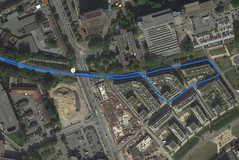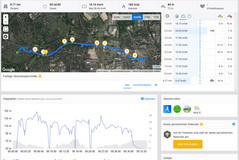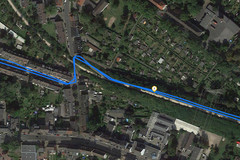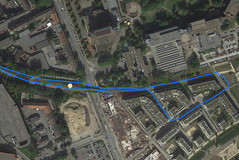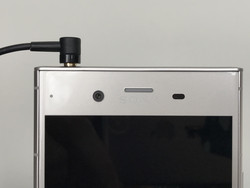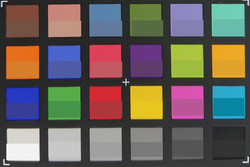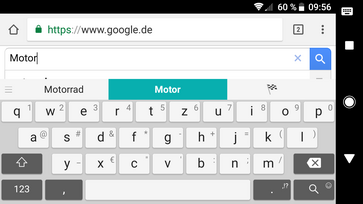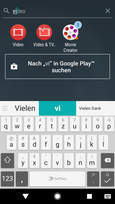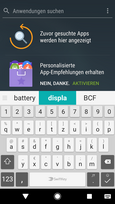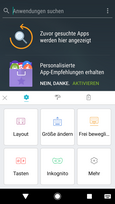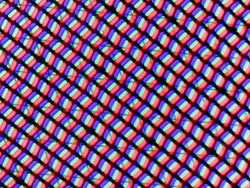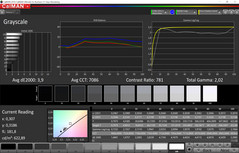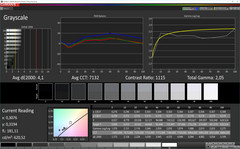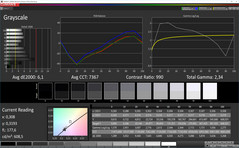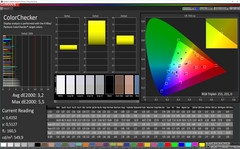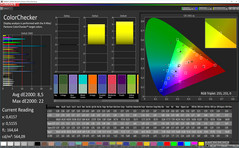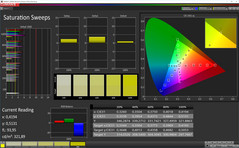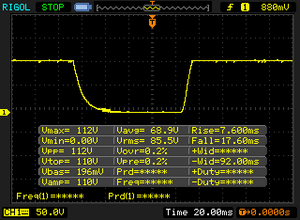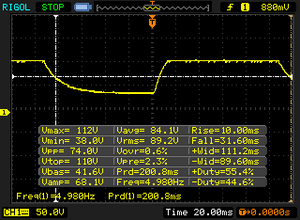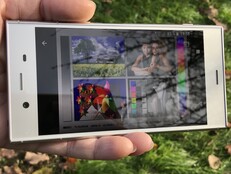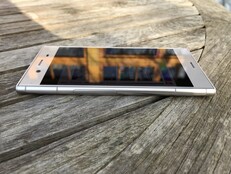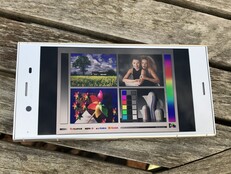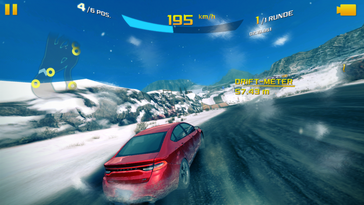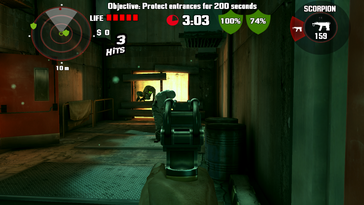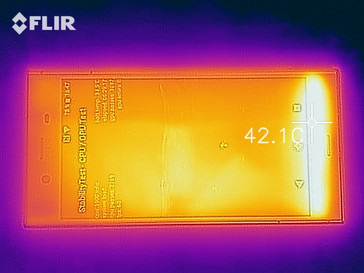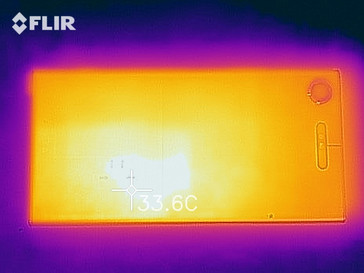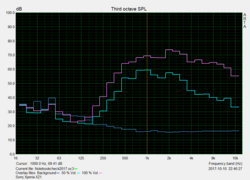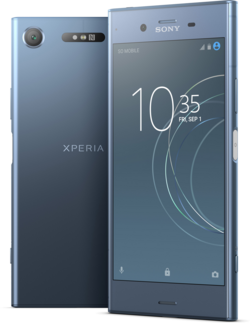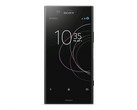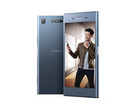Sony Xperia XZ1 Smartphone Review
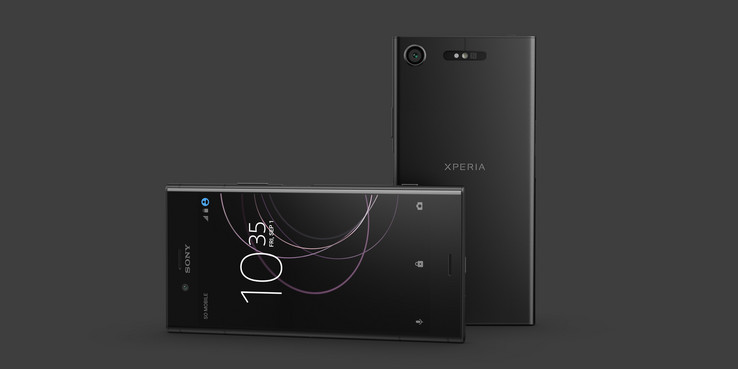
For the original German article, see here.
During the IFA 2016 trade show Sony not only unveiled the Xperia Z5 Premium but also the top-tier high-end smartphone Xperia XZ. Our review unit is this particular phone’s successor, the Xperia XZ1. At first glance, we noticed that the camera resolution has dropped from 23 to 19 MP, but in return RAM has received a bump from 3 GB to 4 GB and the storage space has even doubled. Quite a few upgrades to begin with. In addition, like the Xperia XZ Premium the XZ1 is equipped with Qualcomm’s Snapdragon 835 (8998) SoC, and even though we have only had the single SIM model in review a dual SIM version is also available. Competitors include other XZ-series phones as well as other non-XZ high-end smartphones, like for example the OnePlus 5.
Case
Notwithstanding the fact that ever since the Xperia Z1, Xperia smartphones have slowly but surely transformed from modern to dull over the years their design is still undeniably unique. The entire case apart from the top and bottom panels is made of aluminum. The two exceptions are made of matching plastic, and we were unable to tell the plastic parts apart from the aluminum parts thanks to the very neat and smooth transition. Our review unit was clad in Silver, but the XZ1 is also available in Black, a rather softish Pink and an equally pale Blue. Gone is the circular power button, a characteristic Xperia symbol for many years, and in its stead we find the more common elongated power button with integrated fingerprint reader embedded into the aluminum case.
Unlike the protruding volume rocker, the power button is slightly recessed into the case and therefore very easy to distinguish from the former. In the bottom right corner (make that top right in landscape mode) we find a dedicated camera button that opens the camera app and acts as a shutter-release button once the app has been launched.
Although all controls are located on the sides, the bezels below and above the display are still fairly wide: 16 mm (~0.63 in) each. The stereo speakers located in these bezels are but a lame alibi.
Ensuring water and dust resistance are long-standing Sony traditions when it comes to smartphones, and IP65/68 certified XZ1 is no different. This means that it offers the highest currently possible resistance to dust particles and water, and can thus be washed under running water provided that all ports and covers are firmly closed.
All things considered the case is well-made and well-thought-out. Only the wide bezels above and below the display make it seem kind of dated and quaint.
Connectivity
NFC and a notification LED are included as well. Changing the SIM card requires a phone restart. However, the phone features separate trays for the SIM and microSD card hidden behind the same cover to avoid a phone reboot every time one changes the microSD card. Only the microSD tray slides out by default, the SIM card tray requires a separate SIM tool or long finger nails. Arduous for sure, but not a big deal given that SIM cards are rarely ever swapped. 51 GB of the internal storage’s 64 GB is available out of the box, and that is the least we except from a high-end $599 smartphone equipped with a Qualcomm Snapdragon 835 SoC (up to 2.45 GHz).
The octa-core processor, first introduced in March of 2017, is characterized among other things by its connectivity features like Bluetooth 5 and LTE Cat. 16 (downloads with up to 1 GB/s). The Xperia XZ1’s USB 3.1 Type-C port supports USB-OTG and, at least in theory, HDMI capabilities. However, the XZ1 does not make use of this particular feature. After connecting the phone to a computer and installing the Xperia Companion software suite data between the phone and the PC can be exchanged directly via cable transfer instead of Bluetooth or cloud storage.
Additionally, the XZ1 also supports screen mirroring via Miracast - a feature that almost all Android smartphones are capable of these days - as well as media file exchange with DLNA-capable media servers and receivers.
Software
The phone comes with Android 8.0 Oreo preinstalled, and the Xperia UI differs only moderately from Google’s default user interface save for the custom icons. Possible customizations include special Xperia designs as well as three different grid patterns for home screen icon organization (3x4, 4x4, 5x5).
The phone’s preloaded software is a mixed bag. On the one hand apps like a custom calculator, a news suite, or special interest software such as the PlayStation app are not preinstalled by default and have to be downloaded and installed from the store if necessary. On the other hand, Sony’s video app requires downloading the “Video & TV SideView” app on first launch - an app, whose set of features has been drastically diminished over time. And while it might still be useful to some users, for example for detecting and connecting to media servers and receivers, we find it odd that it is a mandatory download even if one simply wants to watch a video saved on the smartphone’s internal storage on the smartphone’s internal screen. Thankfully, Google’s default apps for photos, videos, and music can be found in a separate Google folder in the app drawer.
The included file manager supports Google Drive and OneDrive integration in case the corresponding apps are installed, but lacks support for Box and DropBox. We have not tested any other cloud services.
The following screenshots show the full selection of apps available on the XZ1 out of the box.
Communication and GPS
The European model reviewed by us (G8341) supports all frequencies used by mobile operators in Europe and Germany in particular. Additionally, up to 22 extra LTE bands are supported as well. The phone is thus ideally suited for all those who travel abroad frequently. The North American variant seems to feature a very similar set of supported frequencies. The phone connects to both Wi-Fi spectra, 2.4 and 5 GHz, and also supports the fast ac standard. Connected to a FritzBox 7490 router the phone kept going strong even at a distance where most mid-range smartphones had already lost signal.
Transfer speeds recorded against our Linksys EA8500 reference router were at around 500 MBit/s both sending and receiving. And while all three Xperia smartphones excel in these tests and leave most of their competitors trailing far behind they are unable to keep up with the new iPhones and their potentially record breaking Wi-Fi capabilities.
| Networking | |
| iperf3 transmit AX12 | |
| Samsung Galaxy S8 | |
| OnePlus 5 | |
| Sony Xperia XZ1 | |
| Apple iPhone 8 Plus | |
| Huawei P10 | |
| LG G6 | |
| iperf3 receive AX12 | |
| Apple iPhone 8 Plus | |
| Sony Xperia XZ1 | |
| OnePlus 5 | |
| Samsung Galaxy S8 | |
| LG G6 | |
| Huawei P10 | |
Outdoor location lock is obtained with an accuracy of 3 m (10 ft). However, we were astounded by the surprisingly low number of satellites the phone connected to. Indoors the GPS module lost track fairly quickly, and only managed to receive four rather weak separate signals when tested in a one-story building.
On our bicycle tour together with the Garmin Edge 500, where we record and compare the track on both devices, the XZ1 did fairly well overall. Smartphones tend to cut corners in this test quite regularly and claim to have moved diagonally through buildings and walls, and the XZ1 was no different. In the first section of the test it cut the hairpin bends and located us next to the actual road in a later segment. All things considered the discrepancies were fairly low and the difference in recorded track length between the XZ1 and the Edge 500 was only 70 m (230 ft).
Telephony and Call Quality
Sony resorts to the default Google interface for phone calls. Both conversational partners had no trouble understanding each other using the handset itself while on speakerphone, both sides were slightly distorted and not as clear anymore. The included headset is only mediocre at best when it comes to call quality due to its very effective passive ambient noise cancelation: the in-ear buds block both ear canals very effectively thereby rendering the sound of one’s own voice rather strange and unnatural. A crosscheck with Huawei’s active noise-cancelling headphones failed due to XZ1’s lack of support for the otherwise problem-free ANC headset.
Cameras
Compared to its predecessor, the XZ1’s main camera’s resolution has decreased from 23 MP to 19 MP. On the other hand, aperture has increased from f/2.3 to f/2.0, which is still pretty poor for a high-end smartphone camera. In poor lighting conditions, photos taken with the XZ1 showed a much higher amount of noise when compared to the OnePlus 5 or the Galaxy Note 8. In none of our camera tests was the XZ1 able to keep up with these two. Its depth of field effect was much worse when compared to the OnePlus 5, but in return it offered a higher level of detail. The sensor includes a dedicated buffer memory that among other things is used for the impressive 960 FPS slow-motion feature or 3D scans.
Using the camera is very straightforward. For one, the Xperia XZ1 features a dedicated camera button that can be used for launching the camera app and taking photos. Switching between the main and the front-facing camera within the app can be achieved by swipe gestures. The same is true for activating the so-called ‘intelligent auto-mode’ or manual mode within the settings. Using manual focus, one can achieve a minor bokeh effect even without the second lens, as can be seen on the leftmost photo.
The front-facing 22 mm wide angle camera features an aperture of f/2.0 and a comparatively high resolution of 13 MP and just like the main camera it has a few tricks up its sleeves. For one, it is capable of manual brightness and color balance adjustments even before taking a photo, as can be seen on the other three photos below. Only the one in the middle has been taken in full auto mode without manual adjustments. In poor lighting conditions the screen lights up and acts as a front-facing flash.
Additional software filters that some might find entertaining are included in Sony’s software as well, such as for example a filter that decorates selfies with stickers, enhances photos with sound recordings, or 3D scans that can be uploaded directly from within the app to various service providers.
Color accuracy is determined in a controlled environment under normalized conditions. The test chart to the right shows the reference color in the lower half of each square, and we can see that Yellows are quite accurate whereas Blues, Greens, and Reds are oversaturated. This also affects Whites that turn out rather Grayish instead.
At least the photos are very sharp, and details are not only quite distinguishable in the middle but also along the edges of the photo. Usually, this is where photos tend to lean towards the blurry side.
Accessories and Warranty
Devices sold and purchased in the United States come with a limited 1-year warranty. Please see our Guarantees, Return Policies & Warranties FAQ for country-specific information.
The included charger is specified at 5 V 1.5 A, and in addition to the charger the box also contains a 3.5-mm headset with interchangeable caps in various sizes. The headset is nothing to write home about, and the plug itself protrudes from the headphone jack when fully inserted.
Documentation includes the mandatory paperwork as well as a quick start guide.
Optional accessories include cover stands in matching colors for around $40.
Input Devices and Handling
Despite its relatively large 16 mm (~0.63 in) bezel at the bottom, there are no controls located in that area whatsoever. This means that the usual Android buttons are on-screen at the very bottom and thus tend to get covered by apps in full-screen mode.
Instead of Google’s default GBoard keyboard, the XZ1 comes with SwiftKey preinstalled. It offers various customizations, such as height depending on whether one prefers larger keys or more usable space above the keyboard, or a row of numbers above the alphanumeric keys. The keyboard can also be moved towards the bottom right or bottom left corner for easier one-handed operation, and can be split in half in landscape mode to be more usable when using the thumbs to type. A free-floating placement anywhere on the screen is supported as well.
By default, the keys are labeled with their respective multiple assignments, but the special characters can be removed by selecting a different keyboard layout. Swipe gestures worked reliably and well on the display’s smooth surface.
The fingerprint reader is integrated into the power button on the side, which does have certain advantages. For one, if you take your phone into your hands the thumb is going to be resting on top of the power button in most cases anyway. Unlike rear-facing fingerprint readers, this one is also always accessible even with the phone placed face-up on the table. Pressing the power button triggers the fingerprint reader, and it worked very well and fast in our tests.
Display
The display’s resolution of 1920x1080 is adequate for a 5.2-inch display, and the resulting pixel density is 424 PPI.
Display brightness seemed very high at first glance, and we were able to determine an acceptable range between 586 and 620 nits depending on point of measurement. The resulting average of 610 nits is significantly higher than the XZ’s, and also trumps the Xperia Compact and even the Xperia XZ Premium flagship phone. Unfortunately, the XZ1’s black level is comparatively high, and the contrast ratio of 785:1 relatively low.
The ambient light sensor responsible for automatic brightness adjustment cannot be disabled from the quick settings in the notification area. Instead, one has to navigate all the way to the display settings.
Brightness regulation is implemented via PWM at 2358 Hz, and thus at a frequency sufficiently high for most users. Only the most sensitive might suffer from eye strain.
| |||||||||||||||||||||||||
Brightness Distribution: 93 %
Center on Battery: 620 cd/m²
Contrast: 785:1 (Black: 0.79 cd/m²)
ΔE Color 4.2 | 0.5-29.43 Ø5
ΔE Greyscale 3.9 | 0.57-98 Ø5.3
Gamma: 2.02
| Sony Xperia XZ1 IPS, 1920x1080, 5.20 | Sony Xperia XZ1 Compact IPS, 1280x720, 4.60 | Honor 9 IPS/LTPS, 1920x1080, 5.15 | Huawei P10 LTPS, 1920x1080, 5.10 | Apple iPhone 8 Plus IPS, 1920x1080, 5.50 | LG G6 IPS LCD, 2880x1440, 5.70 | |
|---|---|---|---|---|---|---|
| Screen | -10% | 18% | -0% | 36% | 28% | |
| Brightness middle | 620 | 566 -9% | 550 -11% | 547 -12% | 559 -10% | 646 4% |
| Brightness | 610 | 560 -8% | 535 -12% | 556 -9% | 538 -12% | 611 0% |
| Brightness Distribution | 93 | 98 5% | 92 -1% | 86 -8% | 90 -3% | 89 -4% |
| Black Level * | 0.79 | 0.53 33% | 0.42 47% | 0.43 46% | 0.38 52% | 0.23 71% |
| Contrast | 785 | 1068 36% | 1310 67% | 1272 62% | 1471 87% | 2809 258% |
| Colorchecker dE 2000 * | 4.2 | 4.6 -10% | 3.3 21% | 4.8 -14% | 1.3 69% | 4.5 -7% |
| Colorchecker dE 2000 max. * | 5.8 | 9.4 -62% | 4.5 22% | 8.8 -52% | 2.7 53% | 8.3 -43% |
| Greyscale dE 2000 * | 3.9 | 6.5 -67% | 3.6 8% | 4.5 -15% | 1.8 54% | 6 -54% |
| Gamma | 2.02 109% | 2.14 103% | 2.38 92% | 2.39 92% | 2.25 98% | 2.27 97% |
| CCT | 7086 92% | 8189 79% | 7226 90% | 7194 90% | 6797 96% | 7996 81% |
| Color Space (Percent of AdobeRGB 1998) | 67.74 | |||||
| Color Space (Percent of sRGB) | 99.05 |
* ... smaller is better
Screen Flickering / PWM (Pulse-Width Modulation)
| Screen flickering / PWM detected | 2358 Hz | ≤ 24 % brightness setting | |
The display backlight flickers at 2358 Hz (worst case, e.g., utilizing PWM) Flickering detected at a brightness setting of 24 % and below. There should be no flickering or PWM above this brightness setting. The frequency of 2358 Hz is quite high, so most users sensitive to PWM should not notice any flickering. In comparison: 53 % of all tested devices do not use PWM to dim the display. If PWM was detected, an average of 17933 (minimum: 5 - maximum: 3846000) Hz was measured. | |||
Subjectively speaking the XZ1’s display is crisp and vivid, and by default geared towards the in-house TRILUMINOS color space, which is larger than the default sRGB color space.
Sony offers two presets for the screen, a super vivid and a professional mode. In super vivid mode, colors cover almost the entire DCI-P3 color space. However, they are visibly oversaturated, particularly noticeable when looking at Cyan and Magenta. For the professional mode, Sony promises an authentic color representation based on the sRGB color space. Our spectrophotometer and the CalMAN software have confirmed this by and large, but have also detected visible deviations for all colors with large quantities of Cyan.
Display Response Times
| ↔ Response Time Black to White | ||
|---|---|---|
| 25.2 ms ... rise ↗ and fall ↘ combined | ↗ 7.6 ms rise | |
| ↘ 17.6 ms fall | ||
| The screen shows relatively slow response rates in our tests and may be too slow for gamers. In comparison, all tested devices range from 0.1 (minimum) to 240 (maximum) ms. » 55 % of all devices are better. This means that the measured response time is worse than the average of all tested devices (21.5 ms). | ||
| ↔ Response Time 50% Grey to 80% Grey | ||
| 41.6 ms ... rise ↗ and fall ↘ combined | ↗ 10 ms rise | |
| ↘ 31.6 ms fall | ||
| The screen shows slow response rates in our tests and will be unsatisfactory for gamers. In comparison, all tested devices range from 0.2 (minimum) to 636 (maximum) ms. » 62 % of all devices are better. This means that the measured response time is worse than the average of all tested devices (33.8 ms). | ||
The display is highly reflective in the sun, it remains usable however thanks to its high 610 nits display brightness. With no direct sunlight the display is easily readable outdoors, as can be seen in the third photo.
Performance
Qualcomm Snapdragon 835 SoC - Benchmarks and Specs
Qualcomm’s Snapdragon 835 is certainly one of the most powerful smartphone processors currently available, and many high-end phones are based around this SoC (Xperia XZ Premium, XZ1 Compact, HTC U11, LG V30,Pixel 2, Pixel 2 XL.). All these phones are equipped with 4 GB of RAM, and while overall performance is quite similar between all of these, with Sony’s phones rarely ever taking the lead, the Xiaomi Mi 6 and OnePlus 5 are faster particularly in the graphics benchmarks thanks to more RAM (6 GB). The Exynos 8895 octa-core based Samsung Galaxy S8 was also faster, even though it was equipped with only 4 GB of RAM as well. That said, Apple’s A11 Bionic based iPhone 8 and iPhone X are way out of the Snapdragon 835’s league despite having access to only 2 GB and 3 GB of RAM, respectively. Apple benefits from having full control over the entire hardware.
| Lightmark - 1920x1080 1080p (sort by value) | |
| HTC U11 | |
| Xiaomi Mi 6 | |
| Google Pixel 2 | |
| Google Pixel 2 XL | |
| Samsung Galaxy S8 | |
| Basemark X 1.1 | |
| Medium Quality (sort by value) | |
| HTC U11 | |
| Samsung Galaxy S8 | |
| High Quality (sort by value) | |
| HTC U11 | |
| Xiaomi Mi 6 | |
| Samsung Galaxy S8 | |
| Basemark ES 3.1 / Metal - offscreen Overall Score (sort by value) | |
| HTC U11 | |
| Xiaomi Mi 6 | |
| Google Pixel 2 | |
| Google Pixel 2 XL | |
| Samsung Galaxy S8 | |
| Apple iPhone X | |
| Epic Citadel - Ultra High Quality (sort by value) | |
| HTC U11 | |
| Xiaomi Mi 6 | |
| Samsung Galaxy S8 | |
The XZ1 looks rather slow when compared to other similarly equipped high-end smartphones but in real-life situations these differences were negligible. Websites loaded very quickly and switching between tabs was instantaneous.
| JetStream 1.1 - Total Score | |
| Apple iPhone X (IOS 11.1.1) | |
| Apple iPhone 8 | |
| OnePlus 5 (Chrome 59) | |
| Xiaomi Mi 6 (Chrome Version 58) | |
| HTC U11 (Chrome 58) | |
| Samsung Galaxy S8 (Samsung Browser 5.2) | |
| Google Pixel 2 (Chrome 62) | |
| Sony Xperia XZ1 Compact (Chrome 62.0.3202.84) | |
| Sony Xperia XZ Premium (Chrome 59) | |
| Sony Xperia XZ1 (Chrome 61) | |
| Sony Xperia XZ (Chrome 52) | |
| LG V30 (Chrome 62) | |
| Octane V2 - Total Score | |
| Apple iPhone X (IOS 11.1.2) | |
| Apple iPhone 8 | |
| Samsung Galaxy S8 (Samsung Browser 5.2) | |
| OnePlus 5 (Chrome 59) | |
| Xiaomi Mi 6 (Chrome Version 58) | |
| HTC U11 (Chrome 58) | |
| Sony Xperia XZ1 Compact (Chrome 62.0.3202.84) | |
| Google Pixel 2 (Chrome 62) | |
| Sony Xperia XZ Premium (Chrome 59) | |
| LG V30 (Chrome 62) | |
| Sony Xperia XZ1 (Chrome 61) | |
| Sony Xperia XZ (Chrome 52) | |
| Mozilla Kraken 1.1 - Total | |
| LG V30 (Chrome 62) | |
| Google Pixel 2 (Chrome 62) | |
| Sony Xperia XZ1 Compact (Chrome 62.0.3202.84) | |
| Sony Xperia XZ1 (Chrome 61) | |
| Sony Xperia XZ Premium (Chrome 59) | |
| Sony Xperia XZ (Chrome 52) | |
| HTC U11 (Chrome 58) | |
| Xiaomi Mi 6 (Chrome Version 58) | |
| OnePlus 5 (Chrome 59) | |
| Samsung Galaxy S8 (Samsung Browser 5.2) | |
| Apple iPhone 8 | |
| Apple iPhone X (IOS 11.1.2) | |
| WebXPRT 2015 - Overall | |
| Apple iPhone 8 | |
| Apple iPhone X (Safari Mobile 11.0) | |
| Samsung Galaxy S8 (Samsung Browser 5.2) | |
| Google Pixel 2 (Chrome 62) | |
| Sony Xperia XZ1 (Chrome 61) | |
| Sony Xperia XZ1 Compact (Chrome 62.0.3202.84) | |
| HTC U11 (Chrome 58) | |
| OnePlus 5 (Chrome 59) | |
| Sony Xperia XZ Premium (Chrome 59) | |
| LG V30 (Chrome 62) | |
| Sony Xperia XZ (Chrome 52) | |
* ... smaller is better
51 GB of the internal 64 GB UFS memory that the XZ1 is equipped with are available out of the box, and overall storage performance was adequate. External storage media access benchmarked with our 64 GB Toshiba Exceria Pro SDXC UHS-II reference card was moderately faster than the XZ Premium but still comparatively slow. According to Sony, the maximum microSD capacity supported is 256 GB.
| Sony Xperia XZ1 | Sony Xperia XZ Premium | HTC U11 | Xiaomi Mi 6 | Google Pixel 2 | Samsung Galaxy S8 | Huawei Mate 10 Pro | |
|---|---|---|---|---|---|---|---|
| AndroBench 3-5 | -19% | 67% | 16% | 10% | 1% | 249% | |
| Sequential Read 256KB | 679 | 687 1% | 717 6% | 728 7% | 758 12% | 793 17% | 732 8% |
| Sequential Write 256KB | 204.4 | 194 -5% | 206.4 1% | 196.7 -4% | 196.2 -4% | 193.2 -5% | 208.7 2% |
| Random Read 4KB | 156.6 | 74.1 -53% | 91.4 -42% | 143.5 -8% | 173.1 11% | 127.2 -19% | 132.3 -16% |
| Random Write 4KB | 14.93 | 17.2 15% | 80 436% | 25.19 69% | 18.03 21% | 15.25 2% | 164.4 1001% |
| Sequential Read 256KB SDCard | 65.5 ? | 36.79 ? -44% | 68.8 ? 5% | 63.9 ? -2% | |||
| Sequential Write 256KB SDCard | 47.71 ? | 33.31 ? -30% | 46.25 ? -3% | 53.5 ? 12% |
Gaming
Bright display, vivid colors, and accurate motion detection when gaming - what else does one need? The Adreno 540 GPU that comes with the Snapdragon 835 mastered all games that we threw at it easily, and “Dead Trigger 2” was running very smoothly at 60 FPS.
“Asphalt 8” was a lot of fun on this miniature gaming console. When playing games in landscape mode the otherwise disadvantageous bezels turn into a big plus all of a sudden, and improve leeway for both thumbs enormously.
The Xperia XZ1 connects to PlayStation 4 DualShock controllers via Bluetooth, which can then be used for gaming. Manual acceleration in “Asphalt 8” worked much better with the controller connected to the phone and the thumb on the trigger than having the thumb go back and forth between the various gestures.
Emissions
Temperature
Finally! Sony has managed to get the temperature issues that plagued previous Xperia smartphones to the point where they were rendered unusable under control. The XZ1 stayed below 40 °C (~104 °F) at all times while the XZ Premium crossed that threshold around the earphone. Sony has finally addressed the issue, resulting in a mostly Blue-colored temperature map even under load.
Using GFXBench’s battery test we determine processor performance under load, and we are pleased to report that the XZ1 did not throttle.
(+) The maximum temperature on the upper side is 38.3 °C / 101 F, compared to the average of 35 °C / 95 F, ranging from 21.9 to 56 °C for the class Smartphone.
(+) The bottom heats up to a maximum of 32.1 °C / 90 F, compared to the average of 33.8 °C / 93 F
(+) In idle usage, the average temperature for the upper side is 27.5 °C / 82 F, compared to the device average of 32.7 °C / 91 F.
Speakers
Two speakers are still a rarity in smartphones these days. While streaming video we were satisfied with the overall stereo effects in terms of soundscape and noise. However, when listening to music - which one tends to enjoy at increased volume more often than not - the XZ1 quickly ran out of oomph. It lacked volume and fullness, which Apple’s Plus models tend to excel at.
The included headset is decent and sufficient, but it is nothing to brag about. The included caps cancel out ambient noise sufficiently, assuming that one of the sizes provided fits.
Sony Xperia XZ1 audio analysis
(±) | speaker loudness is average but good (80.9 dB)
Bass 100 - 315 Hz
(-) | nearly no bass - on average 31.2% lower than median
(±) | linearity of bass is average (11.6% delta to prev. frequency)
Mids 400 - 2000 Hz
(+) | balanced mids - only 4.4% away from median
(+) | mids are linear (6.8% delta to prev. frequency)
Highs 2 - 16 kHz
(+) | balanced highs - only 2.8% away from median
(+) | highs are linear (4.4% delta to prev. frequency)
Overall 100 - 16.000 Hz
(±) | linearity of overall sound is average (24.2% difference to median)
Compared to same class
» 50% of all tested devices in this class were better, 8% similar, 42% worse
» The best had a delta of 12%, average was 38%, worst was 134%
Compared to all devices tested
» 69% of all tested devices were better, 6% similar, 25% worse
» The best had a delta of 4%, average was 25%, worst was 134%
Samsung Galaxy S8 audio analysis
(+) | speakers can play relatively loud (82.4 dB)
Bass 100 - 315 Hz
(-) | nearly no bass - on average 22.1% lower than median
(±) | linearity of bass is average (11.7% delta to prev. frequency)
Mids 400 - 2000 Hz
(±) | higher mids - on average 5% higher than median
(+) | mids are linear (4.3% delta to prev. frequency)
Highs 2 - 16 kHz
(+) | balanced highs - only 3.7% away from median
(+) | highs are linear (6.7% delta to prev. frequency)
Overall 100 - 16.000 Hz
(±) | linearity of overall sound is average (21.8% difference to median)
Compared to same class
» 37% of all tested devices in this class were better, 8% similar, 55% worse
» The best had a delta of 12%, average was 38%, worst was 134%
Compared to all devices tested
» 57% of all tested devices were better, 7% similar, 36% worse
» The best had a delta of 4%, average was 25%, worst was 134%
LG G6 audio analysis
(±) | speaker loudness is average but good (80.3 dB)
Bass 100 - 315 Hz
(-) | nearly no bass - on average 17.1% lower than median
(±) | linearity of bass is average (14.7% delta to prev. frequency)
Mids 400 - 2000 Hz
(+) | balanced mids - only 4.8% away from median
(+) | mids are linear (4% delta to prev. frequency)
Highs 2 - 16 kHz
(±) | higher highs - on average 6.6% higher than median
(+) | highs are linear (5.9% delta to prev. frequency)
Overall 100 - 16.000 Hz
(±) | linearity of overall sound is average (23.2% difference to median)
Compared to same class
» 46% of all tested devices in this class were better, 8% similar, 47% worse
» The best had a delta of 12%, average was 38%, worst was 134%
Compared to all devices tested
» 65% of all tested devices were better, 6% similar, 29% worse
» The best had a delta of 4%, average was 25%, worst was 134%
Frequency diagram (checkboxes selectable/deselectable!)
Battery Life
Power Consumption
The XZ1 is certainly not the most efficient phone. Apart from the low power consumption in standby (which marks only the highest positive deviation) the phone consumed more energy than every single one of its competitors, particularly under load.
Charging from near empty to 100% takes around 2.5 hours, and the battery reads 36% after 30 minutes of charging.
| Off / Standby | |
| Idle | |
| Load |
|
| Sony Xperia XZ1 2700 mAh | Sony Xperia XZ Premium 3230 mAh | Sony Xperia XZ1 Compact 2700 mAh | Huawei Mate 10 Pro 4000 mAh | HTC U11 3000 mAh | Samsung Galaxy S8 3000 mAh | Xiaomi Mi 6 3350 mAh | OnePlus 5 3300 mAh | |
|---|---|---|---|---|---|---|---|---|
| Power Consumption | -0% | 8% | 16% | 7% | 27% | 22% | 8% | |
| Idle Minimum * | 0.51 | 0.62 -22% | 0.58 -14% | 0.85 -67% | 0.73 -43% | 0.78 -53% | 0.45 12% | 0.73 -43% |
| Idle Average * | 2.16 | 2.44 -13% | 1.76 19% | 1.15 47% | 1.96 9% | 1.1 49% | 1.67 23% | 1.44 33% |
| Idle Maximum * | 2.23 | 2.59 -16% | 1.81 19% | 1.23 45% | 1.98 11% | 1.16 48% | 1.69 24% | 1.5 33% |
| Load Average * | 7.45 | 4.94 34% | 6.33 15% | 4.12 45% | 4.82 35% | 4.15 44% | 4.07 45% | 6.91 7% |
| Load Maximum * | 9.28 | 7.91 15% | 9.18 1% | 8.42 9% | 7.15 23% | 5.12 45% | 8.54 8% | 8.51 8% |
* ... smaller is better
Battery Life
Considering the phone’s high power consumption it did not come as a surprise that battery life was, shall we say, not the best, and the fairly low battery capacity of no more than 2700 mAh did very little to solve the problem. Constant load at high display brightness has the potential to drain the battery completely in less than three hours - unacceptable for a high-end smartphone. Like most manufacturers Sony has implemented a battery saver feature, which either disables or significantly reduces background activities. It can be enabled either manually at any given time or automatically once the charge level drops to 15%.
| Sony Xperia XZ1 2700 mAh | Sony Xperia XZ Premium 3230 mAh | Huawei Mate 10 Pro 4000 mAh | Google Pixel 2 2700 mAh | HTC U11 3000 mAh | Xiaomi Mi 6 3350 mAh | OnePlus 5 3300 mAh | |
|---|---|---|---|---|---|---|---|
| Battery Runtime | 25% | 59% | -6% | -5% | 23% | 8% | |
| Reader / Idle | 1612 | 1754 9% | 1744 8% | 1457 -10% | 1250 -22% | 1534 -5% | |
| H.264 | 580 | 802 38% | 929 60% | 564 -3% | 498 -14% | 623 7% | |
| WiFi v1.3 | 601 | 695 16% | 818 36% | 575 -4% | 560 -7% | 739 23% | 518 -14% |
| Load | 172 | 236 37% | 398 131% | 161 -6% | 212 23% | 247 44% |
Pros
Cons
Verdict
Xperia smartphones are still easily distinguishable by their unique design, and the XZ1 fits right in. Unfortunately, the wide bezels below and above the display are kind of a downer and should have been a thing of the past by now. On the plus side, the choice of material and manufacturing quality are as high as one would expect from Sony, and the XZ1’s high level of dust and water resistance is not as common in modern smartphones as we would hope for. From a technical point of view there are still a few glitches here and there, such as poor GPS availability indoors or the rather embarrassing stamina under load. Accordingly, we cannot recommend this device to anyone who uses their phone a lot when out and about. It does, however, look like the perfect phone for frequent travelers abroad due to its wide array of supported 3G und 4G/LTE bands. That said, the Dual SIM model has now been made available by Sony and it should fit the bill even better.
Modern on the inside more so than on the outside. On the plus side, the Xperia XZ1 comes with an up-to-date operating system, a fast processor, stereo speakers, and a good camera. The case is dust and water resistant but its old-fashioned bezels above and below the display make it seem outdated and everything but trendy.
Features such as the fingerprint reader are expected at the XZ1’s price point of around $600, but the phone’s internal storage seems almost too small in comparison. Stereo speakers have always been rare in smartphones and support for DLNA has become increasingly rare and can be a big plus for those who have corresponding media servers and receivers at home, particularly for the cineastes among our readers. Too bad the speakers are not particularly good.
The camera is sophisticated and decent, and the fairly versatile camera app is not going to disappoint its users. However, if the camera is one or even the most important factor in a smartphone for you, we suggest taking a closer look at the alternatives made by Apple, Samsung, Huawei, and OnePlus.
What ultimately turned this thing around are the XZ1’s bright and vivid display and its high performance, both of which are major considerations for gamers. The unique PlayStation 4 controller compatibility is worth mentioning again at this point. It might not be new or the most important selling point since pretty much every smartphone can be used in combination with a third-party controller, but it is certainly an advantage if you already happen to own a PS4 controller.
Sony Xperia XZ1
-
11/28/2017 v6(old)
Inge Schwabe


 Deutsch
Deutsch English
English Español
Español Français
Français Italiano
Italiano Nederlands
Nederlands Polski
Polski Português
Português Русский
Русский Türkçe
Türkçe Svenska
Svenska Chinese
Chinese Magyar
Magyar